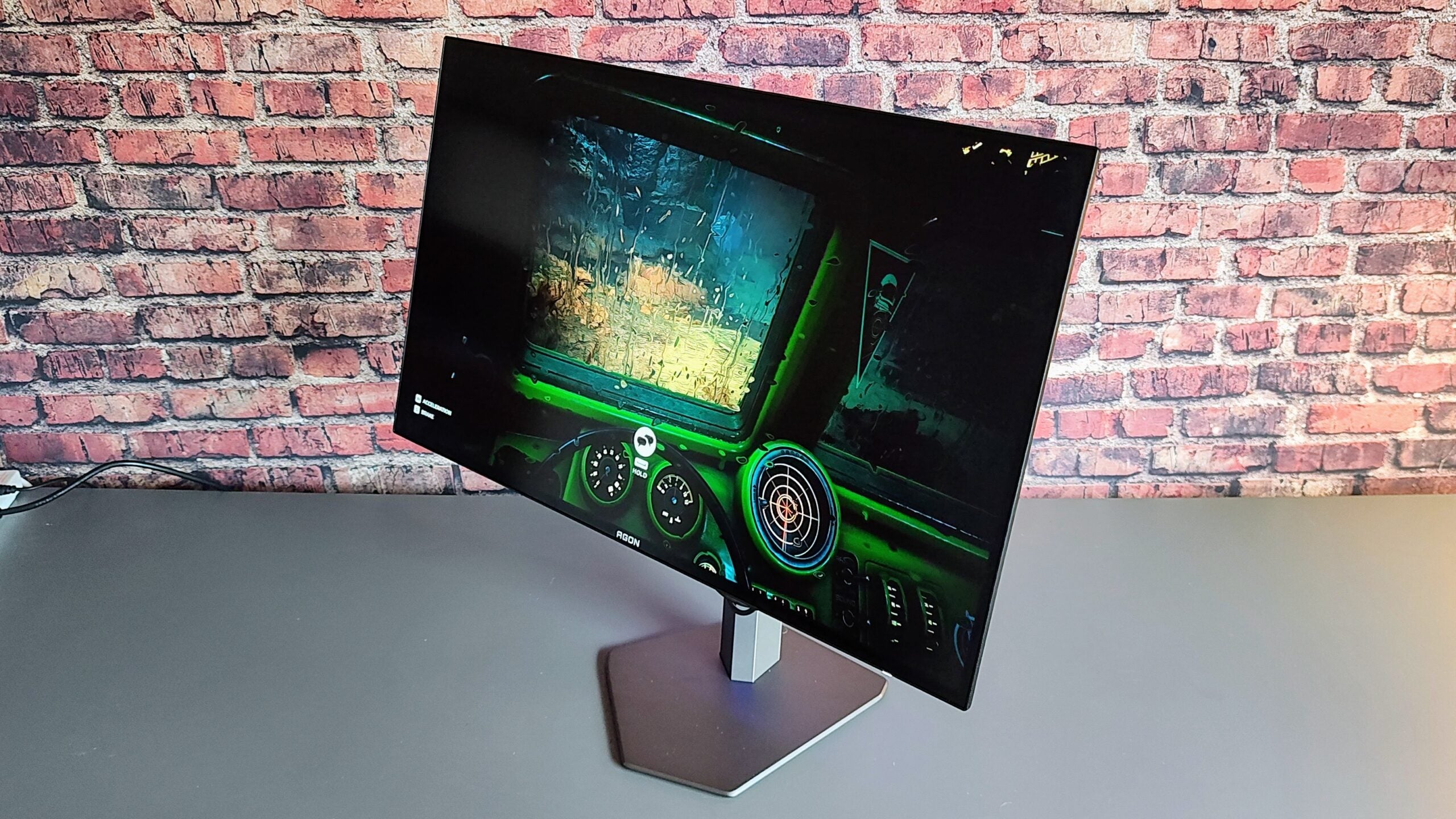Huawei MateView GT Review
The very first gaming monitor from Huawei.
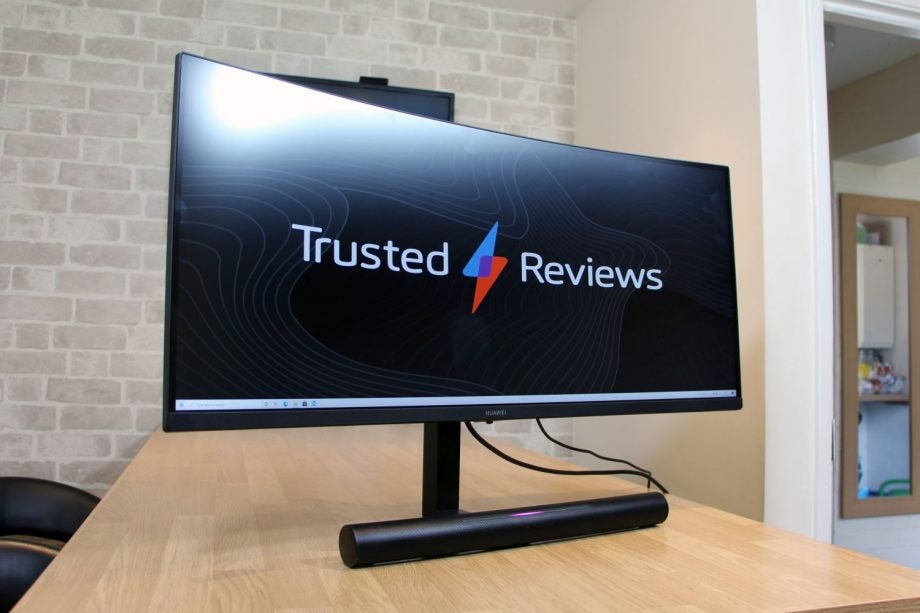

Verdict
The Huawei MateView GT provides a big, bold and immersive mainstream gaming experience and even includes good speakers – but it’s not flawless and not the best if you’re chasing peak performance.
Pros
- Bold, vibrant colours and contrast
- A decent in-built speaker
- Cheaper than the competition
- Immersive widescreen form factor
Cons
- A little too blurry in fast games
- Underwhelming HDR performance
- Middling connectivity and adjustment
Availability
- UKRRP: £499
- USARRP: $499
- EuropeRRP: €548
Key Features
- Widescreen display:The MateView GT features a super-wide 34in screen for immersive gaming.
- 165Hz refresh rate:The 165Hz refresh rate ensures smooth visuals, particularly for shooters.
- Built-in soundbar:The built-in sound bar ensures you get better audio than the majority of monitors.
Introduction
The Huawei MateView GT is the firm’s first gaming monitor, and it’s an unexpected move from the well-known phone manufacturer.
It does make sense, though: the gaming market is booming, Huawei already makes displays, and the company has ambitions beyond smartphones and laptops.
And with a solid specification and a price that undercuts much of the competition, the MateView GT makes a solid first impression. But is it one of the best gaming monitors you can buy?
Price and availability
The MateView GT has a reasonable price: in the UK it’s arriving at £499, it costs $499 in the US and €549 in Europe. That’s tempting, but it also brings Huawei up against rivals that share its form factor.
There’s the Cooler Master GM34-CW, which is another debut effort from an unexpected company. That display costs £549 in the UK, but it’s more expensive in the US and Europe, with prices of $799 and €714.
There’s also the MSI MPG Artymis 343CQR. That display costs £759 in the UK, $649 in the US and €849 in Europe, so it’s pricier than the Huawei.
Design and features
- An immersive and effective widescreen design
- Includes a surprisingly good soundbar
- Middling adjustment and connectivity options
The Huawei MateView GT is a 34-inch widescreen panel with an aspect ratio of 21:9. It’s a great place to start: the extra width makes games more immersive, with racing, shooter, flight sims and adventure titles, in particular, benefiting from the extra horizontal space.
The 3440 x 1440 resolution is solid, too – the density level of 109ppi is crisp enough to make games look great and there’s more vertical space than on a conventional 1080p panel. You also won’t need a ridiculous graphics card to get games running well on the Huawei.
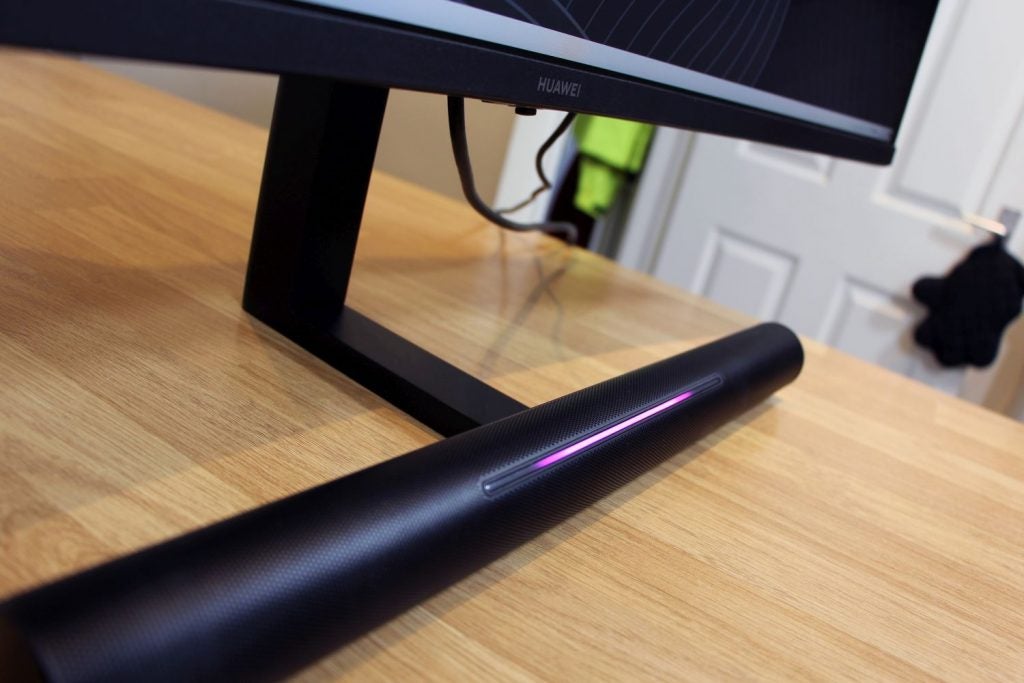
That’s not to say you don’t need something decent – you should have at least an Nvidia GeForce RTX 2070 or 3060 or an AMD Radeon RX 5700 XT – but the Huawei doesn’t demand any of the four-figure flagship GPUs either.
The Huawei’s size, resolution and aspect ratio match its competitors from Cooler Master and MSI. The MateView also uses a 1500R curve, the same radius as the Cooler Master. It’s a solid radius that does a reasonable job of wrapping the panel around the user, but the MSI’s 1000R design was tighter and arguably more immersive.
There are no surprises underneath the curved glass. The MateView uses a VA panel with 10-bit colour. The 4ms response time is fine for single-player gaming but not quick enough for eSports, and that figure is a step behind both competitors. The Huawei’s refresh rate peaks at 165Hz, which is a solid figure for mainstream gaming, and it has AMD FreeSync that works with AMD and Nvidia graphics cards, so gameplay has an extra sheen of smoothness.
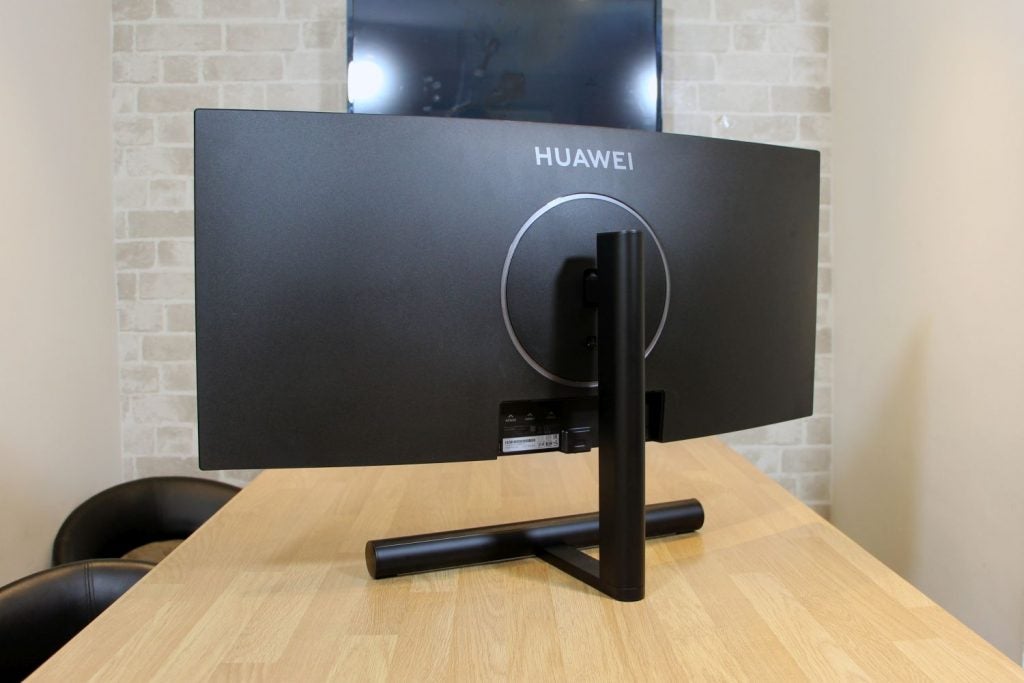
It’s a solid specification, and the MateView is interesting on the outside: the Huawei’s base contains a soundbar with two 5W speakers. The Huawei has a microphone, too, and a band of touch-sensitive, customisable RGB LEDs across the front of the soundbar adjust the volume.
The speakers are extremely loud, easily filling a room, there’s plenty of punchy bass and the mid-range is reasonably clear. These speakers are easily good enough for mainstream gaming, especially thanks to that bass, and they’re better than the audio kit on any rival. That makes them an ideal option if you want decent audio without relying on external hardware.
They’re not infallible, though. The bass may be punchy, but it does overwhelm the mid-range a little, and the top-end is a tad tinny. These speakers aren’t as good as a proper soundbar, a decent TV, or good external speakers.
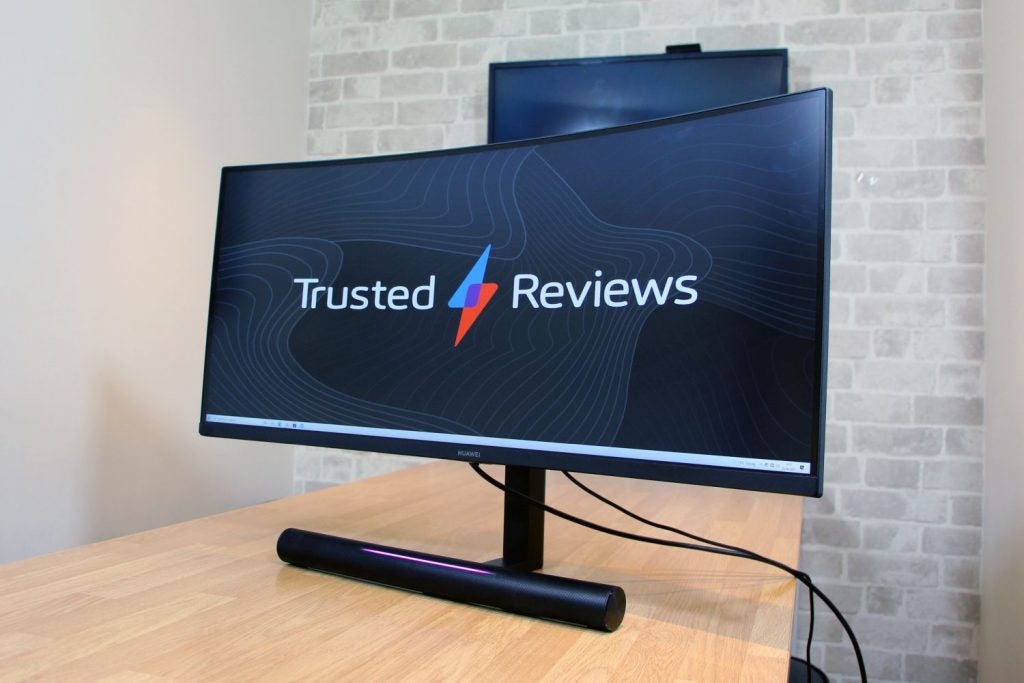
It’s a solid panel elsewhere. The stand is a solid slab of metal, the bezels are slim, and build quality is impressive. The MateView is easy to assemble, and it has 110mm of height adjustment and 25-degree of tilt movement. It supports 100mm VESA mounting, too, although doing this will mean you can’t use the soundbar. There’s no swivel movement, either – something which both competitors include. The stand also has no cable-tidying loops or cavities.
Image inputs include a single DisplayPort connection and two HDMI 2.0 connectors, and an external unit powers the display via a USB-C connection. Huawei’s panel has an audio jack, and it has a second USB-C port that supports DisplayPort, data transfer and 10W of charging. It’s easy to manage, too: the OSD looks plain, but it’s responsive and well-organised.
Image quality
- Huge contrast, great black levels and accurate colours
- Underwhelming in HDR
- 165Hz FreeSync is good for mainstream games, but there’s some blurry motion in faster situations
Out of the box, the Huawei MateView GT’s VA panel delivered a brightness level of 205 nits and a black point of 0.04 nits. The latter figure is sensational, and those results create a contrast ratio of 5125:1.
That is mighty, and it means the Huawei delivers incredible depth, bold colours and superb nuance and vibrancy. It’s punchy, lively and impressive. It’s better than both rivals here – they had VA technology, too, but neither could match this contrast.
The Huawei has good colours. The Delta E of 1.41 is below the point where human eyes will detect deviations, and the colour temperature of 6318K is excellent. Huawei’s screen rendered 99.2% of the sRGB gamut at 122.7% volume, which means bold, bright colours in mainstream games, and it also displayed 86.9% of the DCI-P3 gamut. That’s a little below Huawei’s claimed 90% figure, but this is not a bad bill of health – only the Cooler Master did better with gamuts, and the Huawei beats both rivals on accuracy.
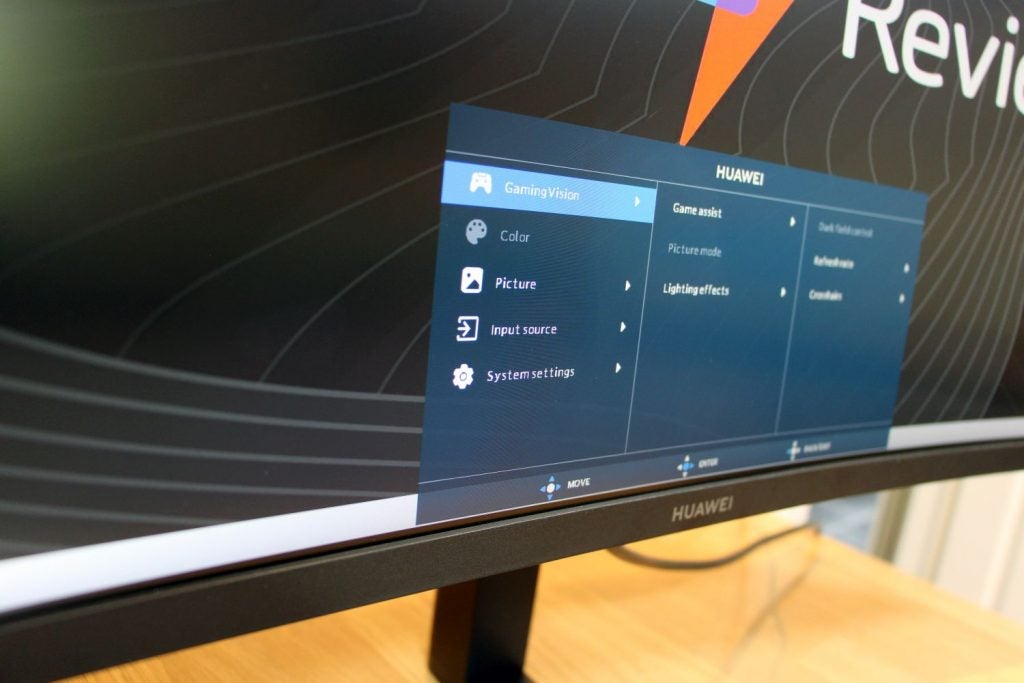
Switching to HDR mode saw the display reach a peak brightness of 399 nits and a black point of 0.08 nits, which means a contrast ratio of 4988:1. That contrast is a little poorer than the SDR figure, and this display also doesn’t have any fancy dimming technology.
You get a little boost in HDR games on this display simply because its peak brightness is higher than the panel’s factory settings unless you’ve tweaked the SDR brightness options yourself. But the lack of proper dimming, the unchanged contrast and the higher black point mean that HDR doesn’t deliver a big gain over SDR here.
The Huawei’s 165Hz refresh rate is good enough for mainstream gaming, including mainstream esports titles, and AMD FreeSync ensures smooth performance in every title. The big single-player titles are smooth on this panel.
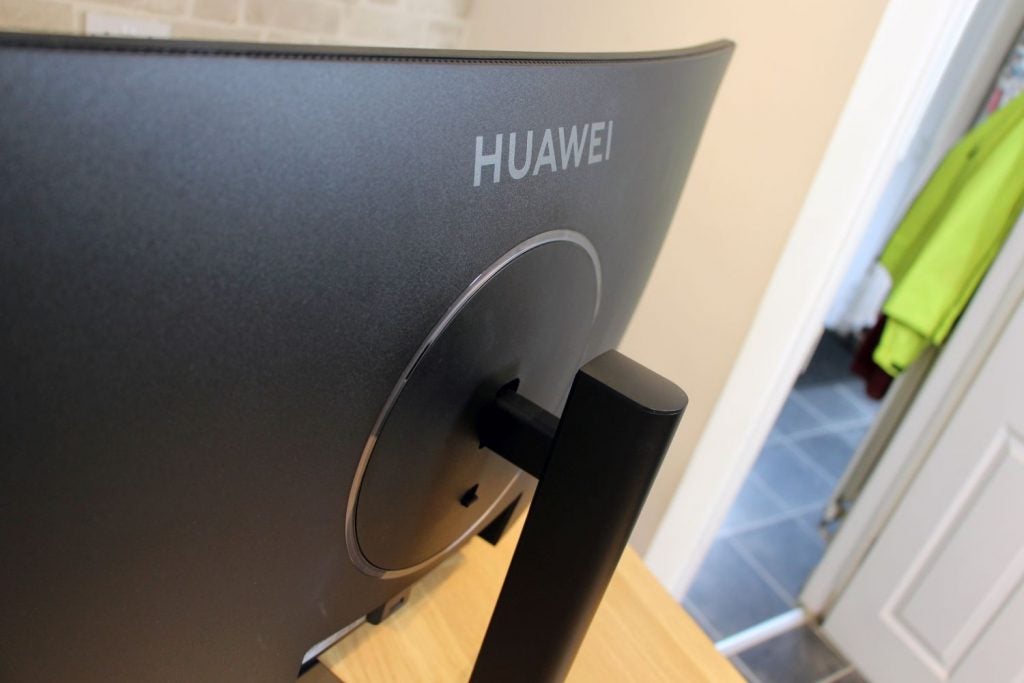
The mid-range 165Hz refresh rate combines with a 4ms response time. That’s great on paper, but it’s not as good as the 1ms response times on the Cooler Master and MSI displays, and that means there’s a little unwanted blurring on this panel. It just won’t have much negative impact in lots of gaming situations, and the minor blurring and middling response times are barely noticeable in those big AAA single-player titles, but it’s worth engaging the display’s Overdrive options to get the best experience.
Don’t use the first three modes, though – with those deployed there’s still plenty of blurring. Level four is the highest Overdrive mode on this display, and it’s by far the best. There’s still a bit of blurring, but the ghosting, inverse ghosting and blur remains dark and minimal compared to the other options. That top Overdrive level delivers the crispest, smoothest experience by far.
Overall, there’s plenty to like: the Huawei MateView GT delivers a bright, bold widescreen experience at a lower price than its rivals, and those speakers make it a solid option if you don’t want to rely on external audio hardware. It’s a vibrant, uncomplicated and effective mainstream display, and a solid debut for Huawei in the monitor market.
Should you buy it?
You want a bold, vibrant widescreen experience in mainstream games:
The MateView GT’s accurate colours and bold, brilliant contrast make games pop, and the resolution, size and aspect ratio are immersive.
You’re a keen eSports player who wants the best response possible:
If you’re interested in eSports, you’ll want a higher refresh rate
and a better response time. Other monitors also have better connectivity and adjustment options.
Final Thoughts
The Huawei MateView GT has fantastic contrast, superb colours, an absorbing form factor and reasonable speakers. Combine all of those things together and you’ve got a monitor that’s ideal for mainstream gaming. It’s not the quickest around, though, so look elsewhere if you’re an esports fan.
FAQs
The MateView GT has a twelve-month warranty.
Huawei supplies a DisplayPort cable, USB-C to USB-C cable and a USB-C to USB-A cable alongside the quick start guide
Trusted Reviews’ test data
Specs
Jargon buster
HDMI
HDMI stands for High Definition Multimedia Interface and is to transmit video/audio signals from a source to a receiver.HDR
HDR stands for High Dynamic Range and refers to contrast (or difference) between the brightest and darkest parts of an image. HDR content preserves details in the darkest and brightest areas of a picture, details that are often lost in old imaging standards. HDR10 is mandated to be included on all HDR TVs. It’s also supported by 4K projectors.Nits
The brightness level of a display. 300 nits is regarded as the minimum target for high-end screens.



